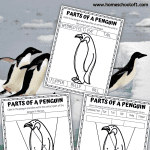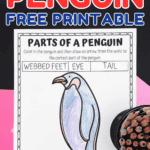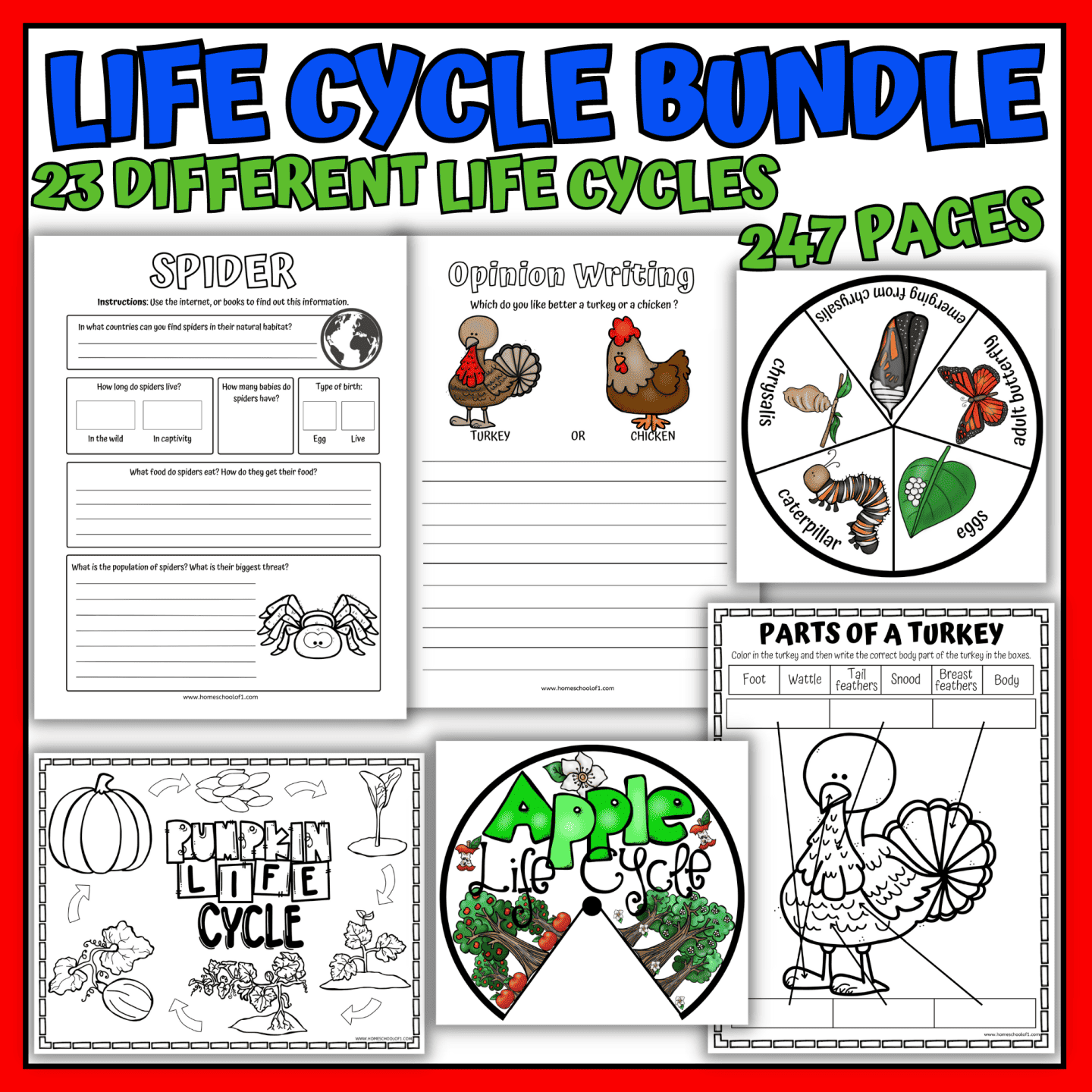Free Parts of a Penguin Worksheet
Get ready for an adventure with our free parts of a penguin worksheet, perfect for exploring the fascinating world of penguins.
These printable anatomy labeling worksheets are designed to engage your little ones by teaching them six key penguin body parts: the bill, belly, flipper, eye, tail, and webbed feet.
Whether they’re labeling from a word bank or matching parts to their correct places, this activity encourages both learning and creativity.
Plus, there’s a black-and-white penguin illustration just waiting to be colored in, adding an extra layer of fun to the experience!
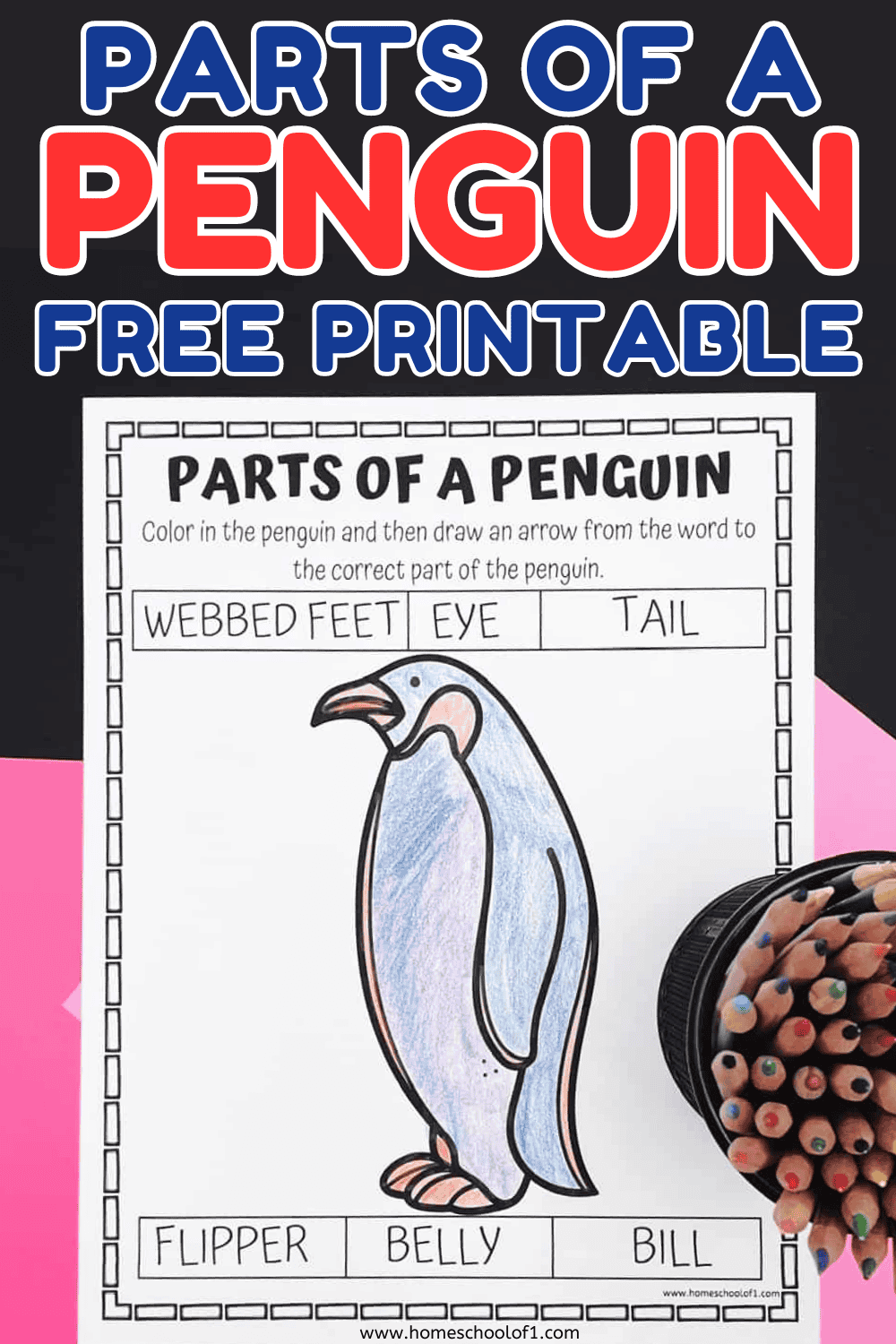
**This post may contain affiliate links. As an Amazon Associate and a participant in other affiliate programs, I earn a commission on qualifying purchases.**
What is the anatomy of a penguin?
In this interactive worksheet, we’ll take a closer look at six essential parts of a penguin’s body, exploring how each feature helps these remarkable birds thrive in their cold, aquatic environment.
Penguins are fascinating creatures, and understanding their unique anatomy reveals just how well-adapted they are to their habitats.
Bill
The penguin’s bill is an essential tool, serving multiple purposes.
Not only does it function as a sharp, slender beak for catching fish and squid, but it also plays a role in regulating body temperature.
The network of blood vessels within the bill allows excess heat to dissipate, helping the penguin stay cool in warmer conditions.
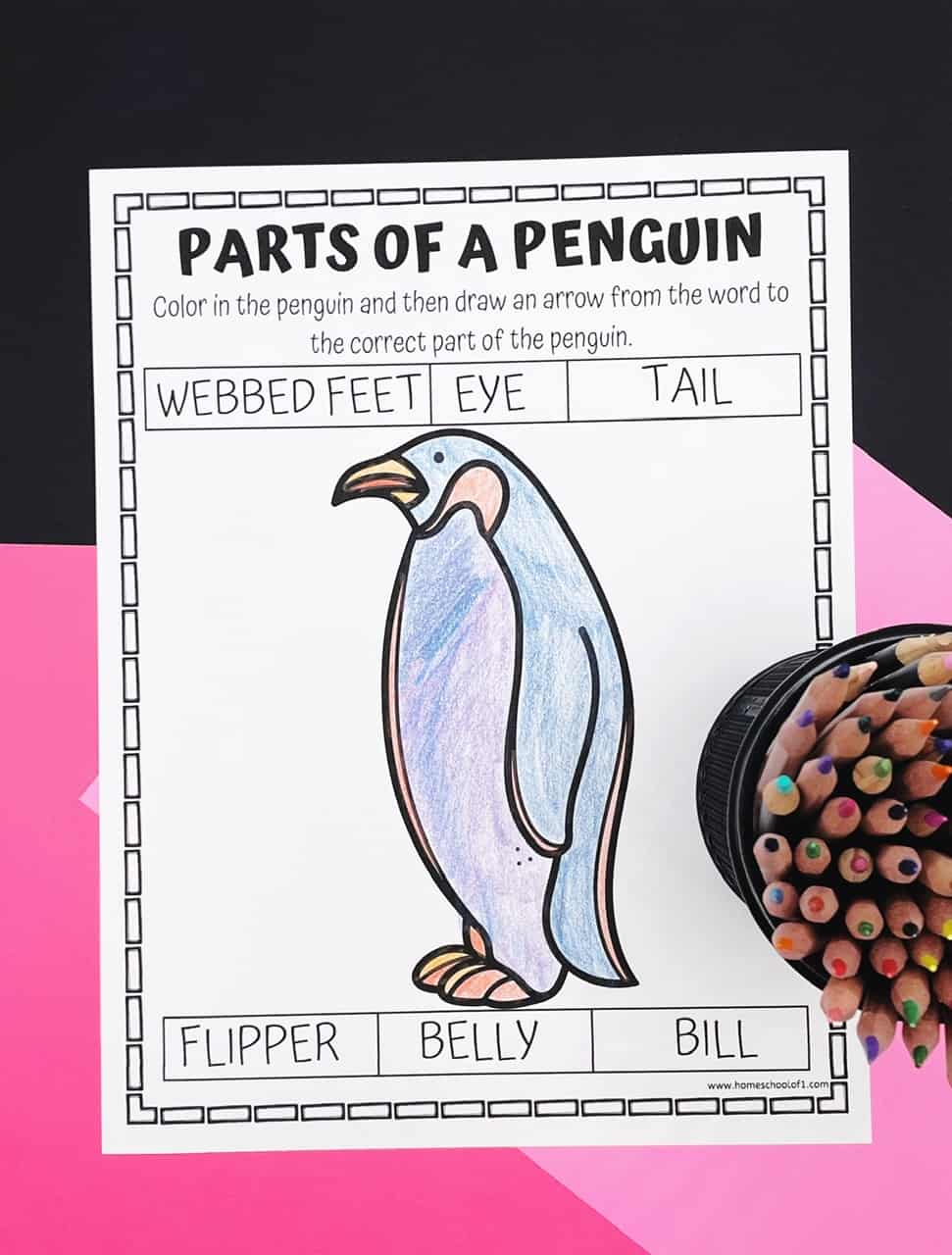
Belly
A penguin’s belly serves a crucial function in thermoregulation.
Beneath their dense feathers, penguins store a thick layer of fat, called blubber. This blubber acts as insulation, enabling penguins to maintain their body heat in freezing waters and withstand harsh, cold climates.
Flipper
Renowned for their exceptional swimming skills, penguins rely on their flippers for propulsion in the water.
These short, rigid wings are perfectly adapted for fast, precise movement through their aquatic environment.
On land, penguins also use their flippers for balance, providing stability as they navigate rocky or icy terrain.
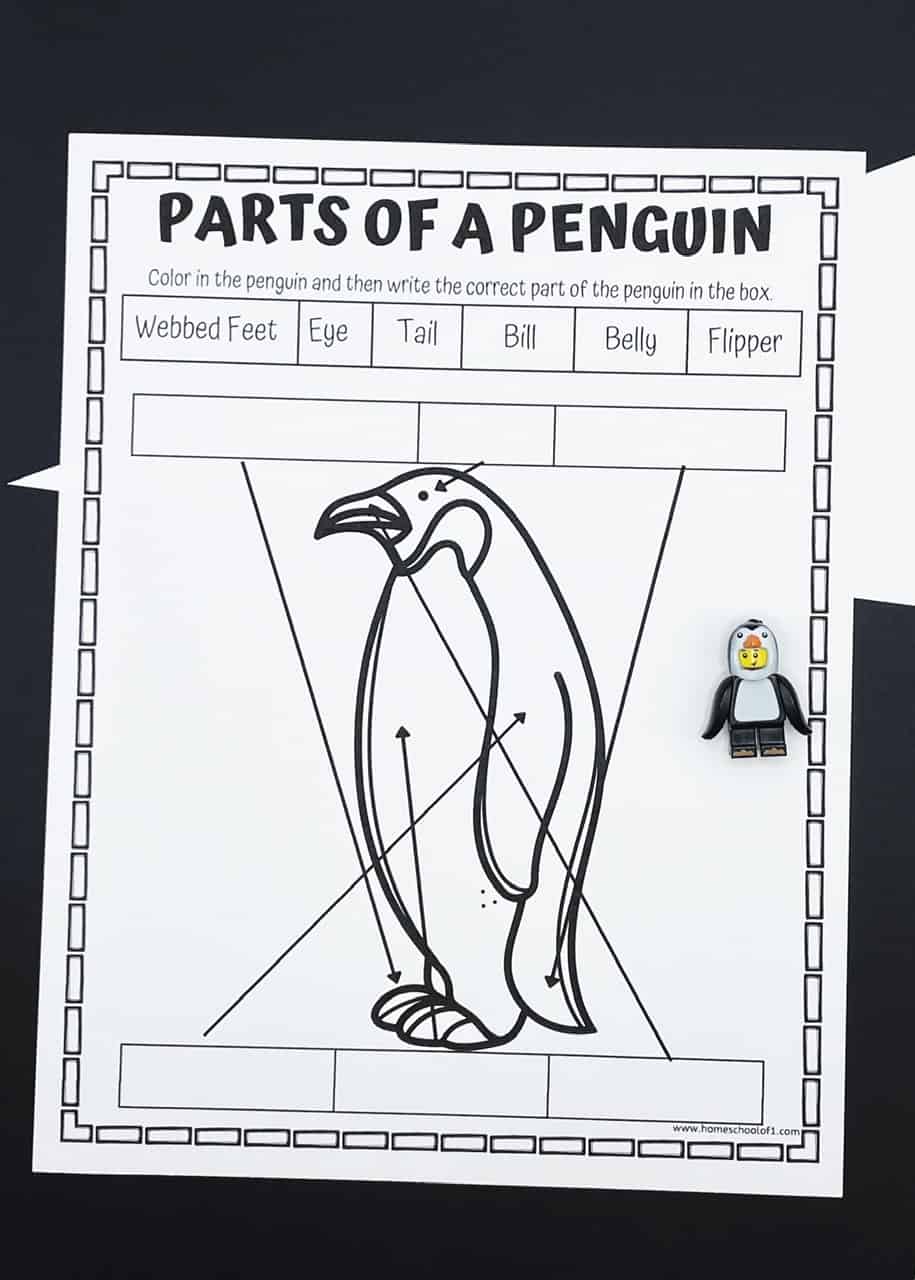
Eye
Though seemingly ordinary, the penguin’s eye has specialized adaptations for underwater vision.
Penguins possess a nictitating membrane, a thin, transparent eyelid, that shields their eyes from the saltwater and harsh conditions of the ocean while allowing them to see clearly underwater.
Tail
While penguins may not have the long, visible tails seen in other birds, their short, stubby tail plays an important role in their movement.
This tail helps penguins maintain balance as they swim and walk, acting as a stabilizer during their underwater turns and allowing for more graceful movement in their aquatic environment.
Webbed feet
Penguin feet are highly specialized for both swimming and walking. Their webbed feet function as natural paddles, enabling them to glide efficiently through the water.
On land, their feet provide grip and stability, helping penguins traverse rough, uneven surfaces and stay upright when gathered in large colonies.
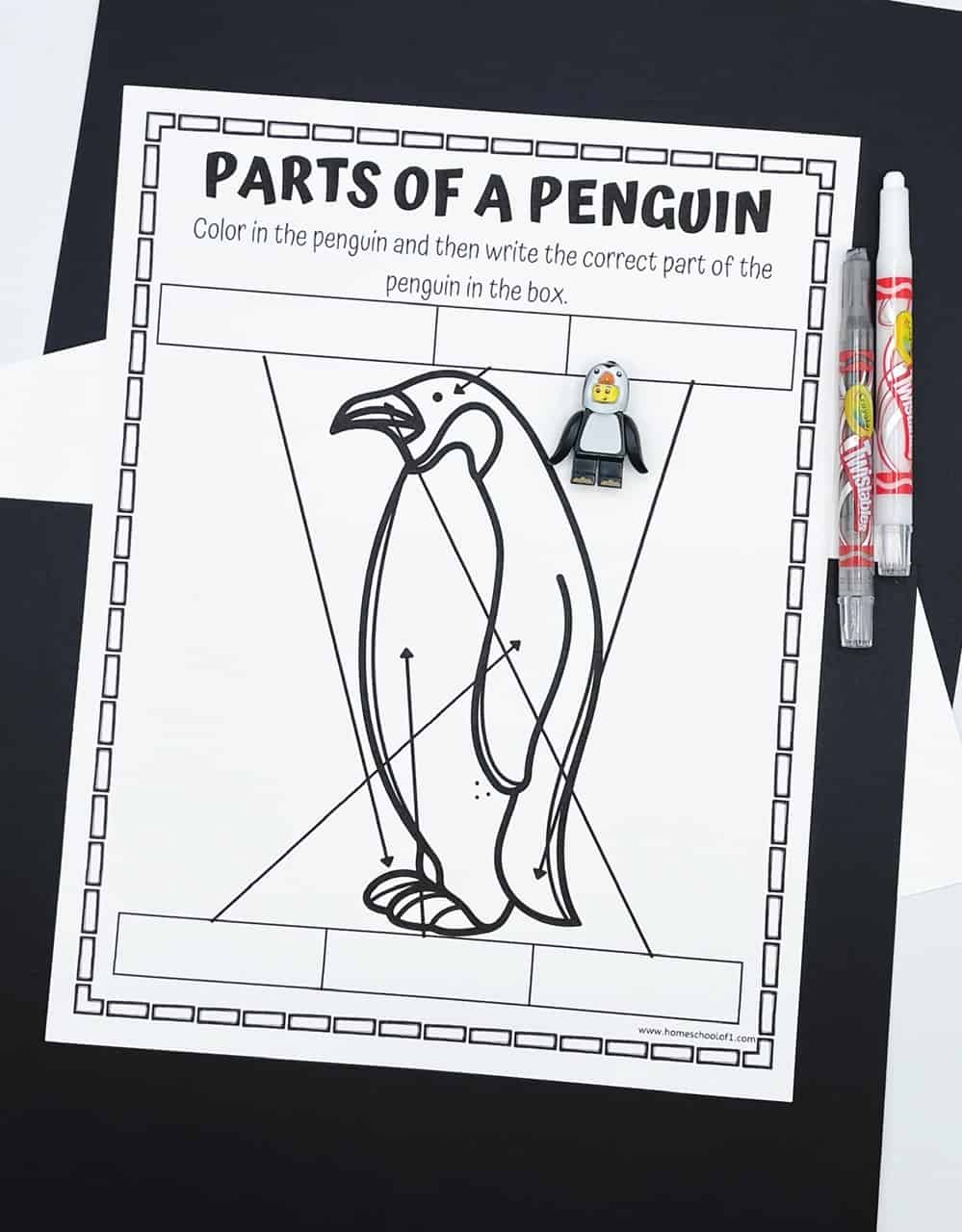
Books about penguins for kids
Adding a few fun penguin-themed books to your lessons is a great way to spark curiosity and imagination. Here are some of our favorites!
Penguins is a fantastic, informative book that introduces young readers to the amazing world of penguins. With beautiful photographs and easy-to-understand text, it explores different penguin species, their habitats, and behaviors, and even highlights the challenges they face in the wild. My kids loved learning about their favorite animals in this one!
Spike is a heartwarming story about a unique penguin with a message that really resonates with kids. The colorful illustrations and themes of friendship and self-acceptance make it a hit with younger readers. It’s one of those books that really encourages kids to embrace what makes them special.
Tacky the Penguin, is an absolute favorite in our home. Tacky is a lovable, quirky penguin whose adventures are full of fun and humor. This story is perfect for showing kids the importance of being themselves and celebrating differences in a way they’ll really enjoy.
Have fun with younger students with these preschool penguin activities!
Free penguin printables
Keep the penguin fun going with these free, educational activities that are perfect for expanding your little ones’ knowledge and creativity:
- Dive deeper into how penguins grow and change throughout their lives. These Life cycle of a penguin worksheets guide children through each stage of a penguin’s life cycle, from egg to adult, helping them understand the amazing journey of these fascinating birds.
- Explore the diversity of penguins with this different types of penguins worksheet that introduces kids to different species, from the Emperor to the African penguin. They’ll learn to identify key features of each type and discover interesting facts about their habitats and behaviors.
- Let your kids’ creativity soar with this fun penguin handprint art activity. Using simple supplies, children can create their very own penguin by tracing their hands and adding details to bring it to life. It’s a perfect mix of art and education, making learning about penguins even more memorable!
Get the free penguin labeling worksheet
If you are running short on time you can download all of our life cycle worksheets. There are 247 pages over 23 different life cycles.
Ready to grab your free printable? Just pop your name and email into the form below, and it’s all yours!
Last Updated on 12 April 2025 by Clare Brown

